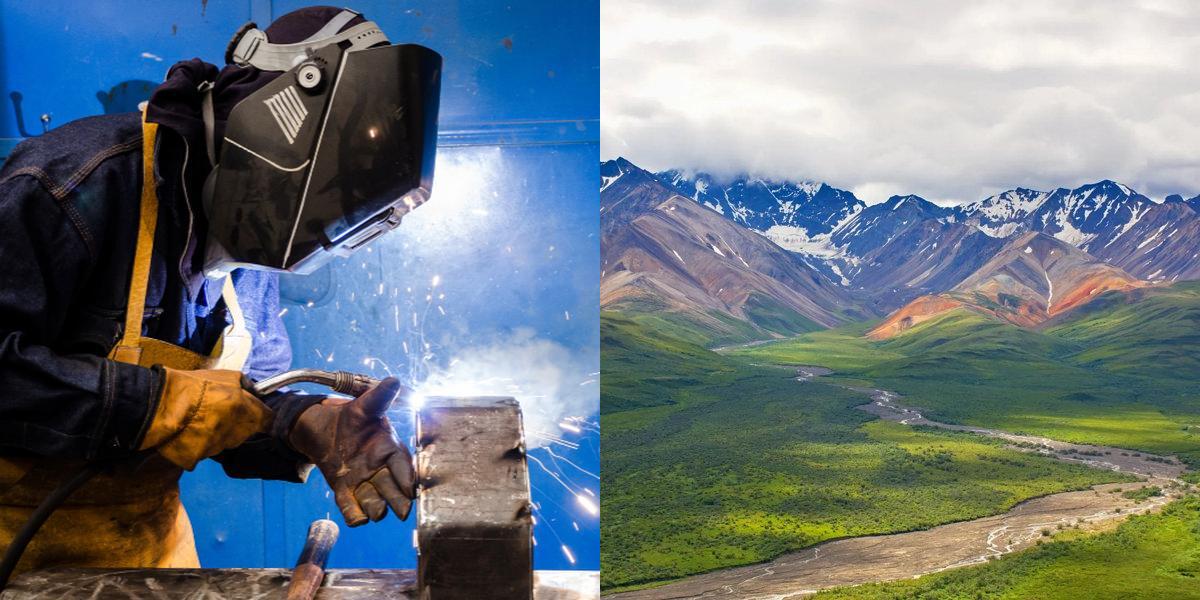How to Become a Welder in Alaska

Welders are skilled professionals who work with various types of metals to join them together using heat and pressure. They play a crucial role in the construction, manufacturing, and repair industries. As a welder, your responsibilities may include interpreting blueprints, operating welding equipment, and ensuring the quality and integrity of the welded structures.
How do I get a job as a Welder?
After obtaining your welder certification, the next step is to find a job as a welder. Here are some steps you can follow to increase your chances of finding employment as a welder:
-
Update your resume: Start by updating your resume to highlight your welding certification and any relevant experience or training you have. Include details about the types of welding you are proficient in, any specialized equipment you have used, and any notable projects you have worked on. Be sure to also include any certifications or licenses you hold, as well as any relevant safety training.
-
Network: Networking is a valuable tool in any job search. Reach out to friends, family, and acquaintances who may have connections in the welding industry. Attend industry events, trade shows, and workshops to meet professionals in the field. Join online forums and social media groups related to welding to connect with others in the industry. Building relationships and making connections can help you uncover job opportunities that may not be advertised publicly.
-
Research potential employers: Research companies in your area that employ welders. Look for companies in industries such as construction, manufacturing, shipbuilding, or oil and gas. Research their hiring practices, company culture, and any current job openings. Tailor your resume and cover letter to each specific employer, highlighting how your skills and experience align with their needs.
-
Apply for jobs: Once you have identified potential employers and tailored your resume and cover letter, start applying for jobs. Look for job postings online, in newspapers, or on company websites. Be proactive in your job search and consider reaching out to companies directly, even if they don't have any current job openings. Sometimes, companies may create positions for qualified candidates.
-
Prepare for interviews: If your application is successful, you may be invited for an interview. Prepare for the interview by researching the company, reviewing common interview questions, and practicing your answers. Be ready to discuss your welding experience, demonstrate your knowledge of welding techniques and safety protocols, and showcase your problem-solving skills.
-
Demonstrate your skills: During the interview process, employers may request a skills assessment or ask for examples of your work. Be prepared to showcase your welding skills by providing examples of projects you have worked on or by completing a welding test. This will give employers a firsthand look at your abilities and help them assess your suitability for the job.
-
Continuously improve your skills: Even after you have secured a job as a welder, it is important to continuously improve your skills. Stay up-to-date with the latest welding techniques, equipment, and safety protocols. Consider taking additional training courses or certifications to expand your skillset and increase your value as a welder.
Finding a job as a welder may require persistence and patience, but with the right qualifications and a proactive approach to your job search, you can increase your chances of success.
Career Paths and Opportunities after Becoming a Welder
Once you have become a certified welder and secured a job in the field, there are various career paths and opportunities you can explore. Welding is a versatile skill that is in demand in a wide range of industries. Here are some of the career paths and opportunities you can consider:
-
Construction: Welders are often employed in the construction industry, working on projects such as building bridges, skyscrapers, or highways. Construction companies may hire welders to join their teams or you may choose to work as a freelance welder on construction projects.
-
Manufacturing: Many manufacturing companies require welders to fabricate and assemble metal parts and structures. This can include industries such as automotive, aerospace, or equipment manufacturing.
-
Shipbuilding: The shipbuilding industry relies heavily on skilled welders. Welders are responsible for joining metal plates and structures to build ships and boats. This can be a rewarding and challenging career path for welders.
-
Oil and gas: The oil and gas industry often requires welders for pipeline construction, maintenance, and repairs. Welders in this industry need to have specialized knowledge and skills to work with the materials and conditions commonly found in the oil and gas sector.
-
Structural steel: Welders specializing in structural steel work on projects such as building frameworks, bridges, or stadiums. This can be a physically demanding but rewarding career path.
-
Automotive: Welders in the automotive industry are responsible for welding together car frames, exhaust systems, and other metal components. This can be a specialized field that requires knowledge of specific welding techniques and materials used in the automotive industry.
-
Artistic welding: Some welders choose to specialize in artistic welding, creating sculptures, decorative metalwork, or other unique pieces. This can be a creative and fulfilling career path for those with a passion for both art and welding.
-
Inspection and quality control: With experience and additional training, welders can also pursue careers in inspection and quality control. These professionals are responsible for ensuring that welding work meets industry standards and specifications.
These are just a few examples of the career paths and opportunities available to welders. Depending on your interests and goals, there are many other industries and specialized fields you can explore. Continuously improving your skills and staying up-to-date with industry trends can open doors to new opportunities and advancement in your welding career.
How much does a Welder make?
The average salary for a welder can vary depending on factors such as experience, location, and industry. According to the U.S. Bureau of Labor Statistics (BLS), the median annual wage for welders, cutters, solderers, and brazers was $43,410 as of May 2020. The lowest 10 percent earned less than $30,860, while the highest 10 percent earned more than $64,240.
Starting salaries for welders can vary greatly. Entry-level welders with little to no experience may start at or near the lower end of the salary range. However, as they gain experience and develop their skills, their earning potential increases.
Final Thoughts
Becoming a certified welder opens up a world of opportunities and a rewarding career. By following the steps outlined in this article, you can obtain your welder certification, find a job in the field, and explore various career paths. Remember to continuously improve your skills and stay up-to-date with industry trends to remain competitive in the job market. Whether you choose to work in construction, manufacturing, shipbuilding, or any other industry, welding offers a fulfilling and stable career with room for growth and advancement. So, start your journey to becoming a welder today and see where this exciting career path takes you.
Are you thinking about a job change or wanting to learn more about different career paths? Feel free to check out these additional articles:

Sunshine is a member of the School Growth team at Dreambound, where she assists students and schools with their billing and onboarding needs. She is a licensed mechanical engineer. Outside of work, she enjoys road trips with her family, discovering cozy cafes, and exploring her love for art.




